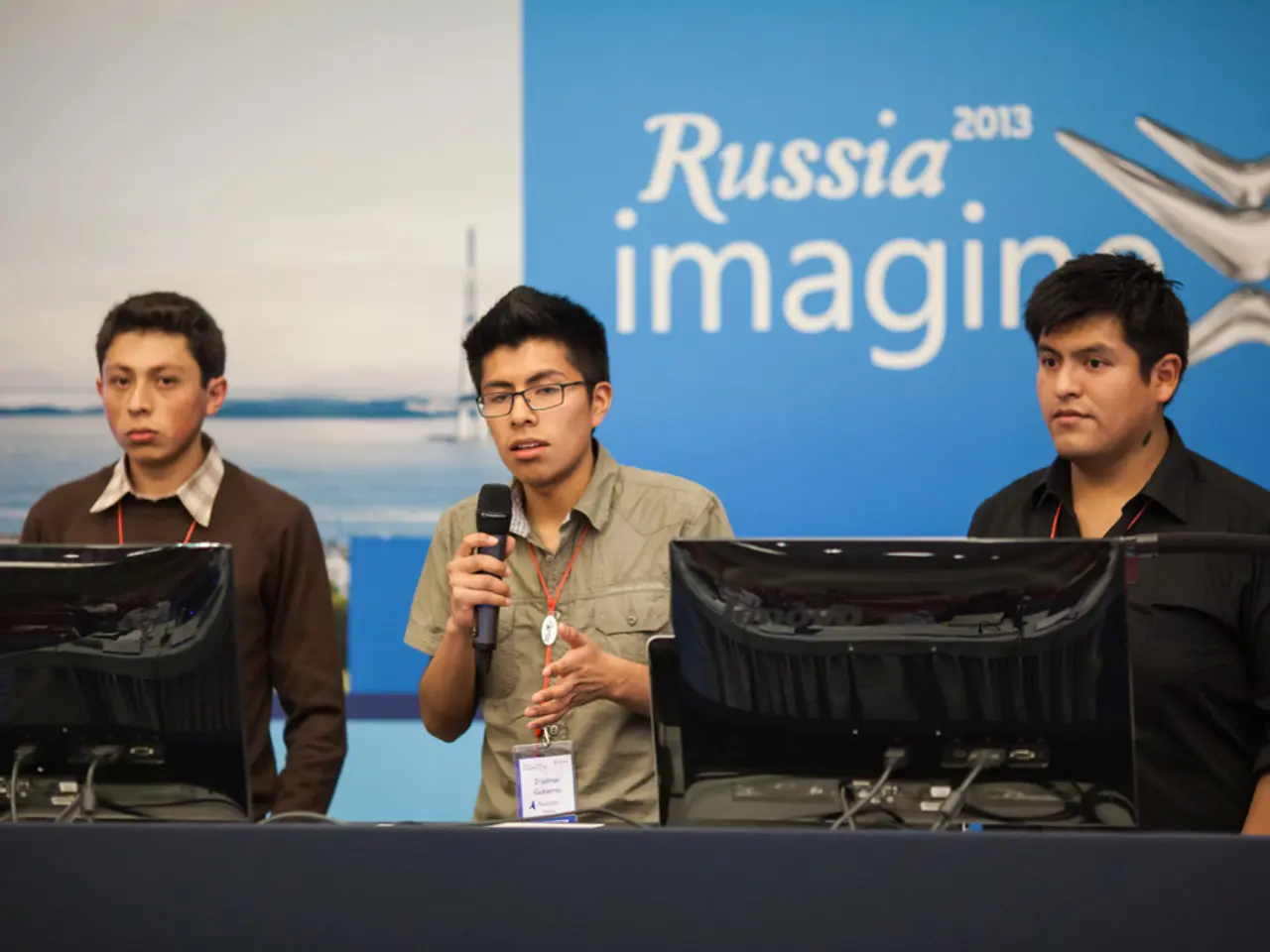United States Defense Secretary Praises Poland as a Top NATO Ally
In a significant shift in U.S. policy, Secretary of Defense Pete Hegseth has reaffirmed a new approach to military support for Ukraine, stating that any potential troop deployments should not fall under NATO's collective defense obligations [1]. This move encourages European nations to take the lead in providing Ukraine with military and humanitarian aid.
Poland, a key supporter of Ukraine, has been advocating for a greater U.S. military presence in Central and Eastern Europe due to concerns over Russian aggression. The country has been a hub for military aid deliveries and training efforts, and currently allocates nearly 5% of its GDP to defense, significantly surpassing NATO's 2% minimum requirement [2].
U.S. Secretary of Defense Pete Hegseth's latest statements suggest a growing expectation for European allies to shoulder more of the security burden. Hegseth has echoed former President Donald Trump's call for NATO members to raise their defense spending to at least 5% of GDP [3].
The shift in U.S. policy regarding military aid to Ukraine has raised concerns in Warsaw, with Polish Foreign Minister Radosław Sikorski warning of potential consequences for U.S. allies worldwide [4]. However, Poland continues to be a key supporter of Ukraine since the full-scale invasion by Russia in February 2022.
In addition to Poland, other European NATO members are expected to increase their defense budgets substantially over the next decade to approach or meet the 5% target. Germany, for instance, plans to increase its defense spending from about 2.4% of GDP in 2025 to meeting the 3.5% “core” spending goal by 2029 [1].
The current defense spending goals for NATO allies, as emphasized by Secretary of Defense Hegseth, set a target for members to invest 5 percent of their GDP in defense by 2035. This breaks down into 3.5 percent on core military capabilities and an additional 1.5 percent on infrastructure, cybersecurity, resilience, and direct contributions toward war materiel or support for Ukraine [1][2].
The European Union foreign policy chief Kaja Kallas emphasizes the EU's role in resolving the conflict in Ukraine. European leaders, including those from the Weimar Triangle (Poland, Germany, and France), Italy, the UK, and Spain, are advocating for active participation in negotiations concerning Ukraine's future [5].
The United States continues to spend above the 2% minimum, averaging about 3.2 to 3.5% of GDP on defense, with recent one-time budget increases supporting this [1]. The share of Poland's defense budget dedicated to acquisitions rose from 20.4% in 2022 to 35.9% in 2023, reflecting the country's commitment to strengthening its military capabilities [2].
In June 2025, NATO agreed that member nations should move from the earlier 2% GDP spending goal (set in 2006) toward this new, more ambitious 5% target by 2035 [1][2]. This reflects a shift driven by security challenges posed especially by Russia’s invasion of Ukraine.
References: [1] https://www.reuters.com/world/europe/nato-to-urge-members-increase-military-budgets-2023-06-28/ [2] https://www.nytimes.com/2023/06/30/world/europe/nato-defense-spending-ukraine.html [3] https://www.bbc.com/news/world-us-canada-65261310 [4] https://www.politico.eu/article/poland-us-ukraine-defense-spending-hegseth/ [5] https://www.politico.eu/article/european-leaders-urge-active-participation-in-ukraine-negotiations/
- The new approach to military support for Ukraine, proposed by Secretary of Defense Pete Hegseth, suggests a greater role for European nations in providing military and humanitarian aid.
- Hegseth's statements indicate a growing expectation for European allies to increase their defense budgets, mirroring former President Donald Trump's call for NATO members to allocate 5% of GDP to defense spending.
- The expected increase in defense budgets by European NATO members, including Germany, is in response to the U.S. shift in policy regarding military aid to Ukraine and the growing concerns over Russian aggression.
- The European Union foreign policy chief, Kaja Kallas, underscores the EU's role in resolving the conflict in Ukraine, with European leaders advocating for active participation in negotiations concerning Ukraine's future.
- The new defense spending goals for NATO allies, as emphasized by Secretary of Defense Hegseth, set a target for members to invest 5 percent of their GDP in defense by 2035, with a breakdown including 3.5 percent on core military capabilities and an additional 1.5 percent on infrastructure, cybersecurity, resilience, and direct contributions toward war materiel or support for Ukraine.






